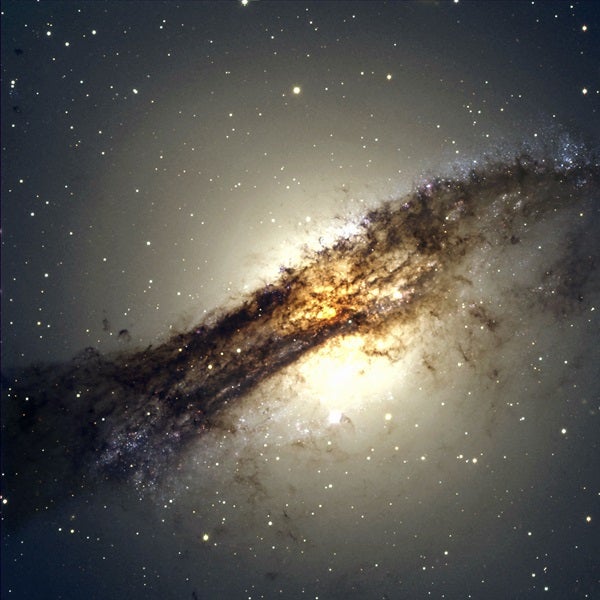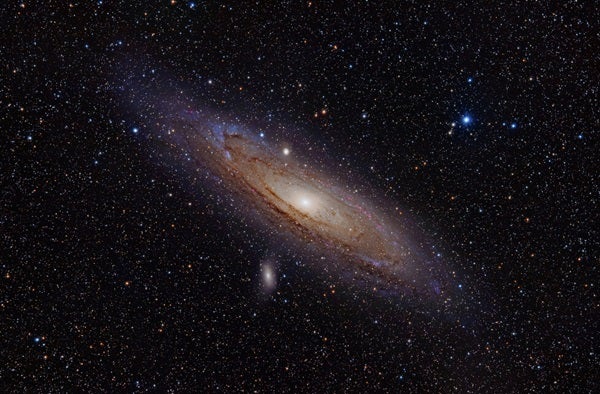The results, published today in Science, show that the satellite galaxies surrounding Centaurus A, a well-known and relatively nearby galaxy 13 million light-years away, are orbiting not only in a single plane, but in a nice, orderly fashion as well. Such observations confirm what astronomers have already seen around our own Milky Way and the Andromeda Galaxy, but fly in the face of the standard cosmological model, which say that such systems should be rare — as in, 0.5 percent of galaxies. But at three for three, astronomers have seen it in 100 percent of systems, instead.
Centaurus A is an ideal object around which to study satellite galaxies because its satellites appear arranged neatly on a plane that is perpendicular to the galaxy itself, and edge-on when we see it from Earth. That means any Doppler shifting of the light received from the satellite galaxies due to their motion is from their motion around the galaxy’s center, rather than overall motion toward or away from us. Out of 16 satellite galaxies observed, 14 are rotating together around the center of the galaxy. This is consistent with the findings when astronomers observe satellites around the Milky Way and Andromeda.
The 3-D spatial distribution of the CenA subgroup of satellite galaxies around Centaurus A.
The ultimate conclusion is that it’s common for satellite galaxies to move together — not randomly, as dark matter models predict. But while these results put added force behind a blow to our current understanding of dark matter, they don’t necessarily mean that dark matter is no more. What they do mean, however, is that our understanding of the way dark matter interacts with the universe may not be completely correct — which makes sense, given that we’ve yet to detect it directly. Challenges to current models are the best way to hone and improve those models, pushing them to better match the universe as we make new discoveries and uncover new pieces of the puzzle.
Homepage Slider Image of Centaurus A: Christian Wolf & SkyMapper Team/Australian National University











